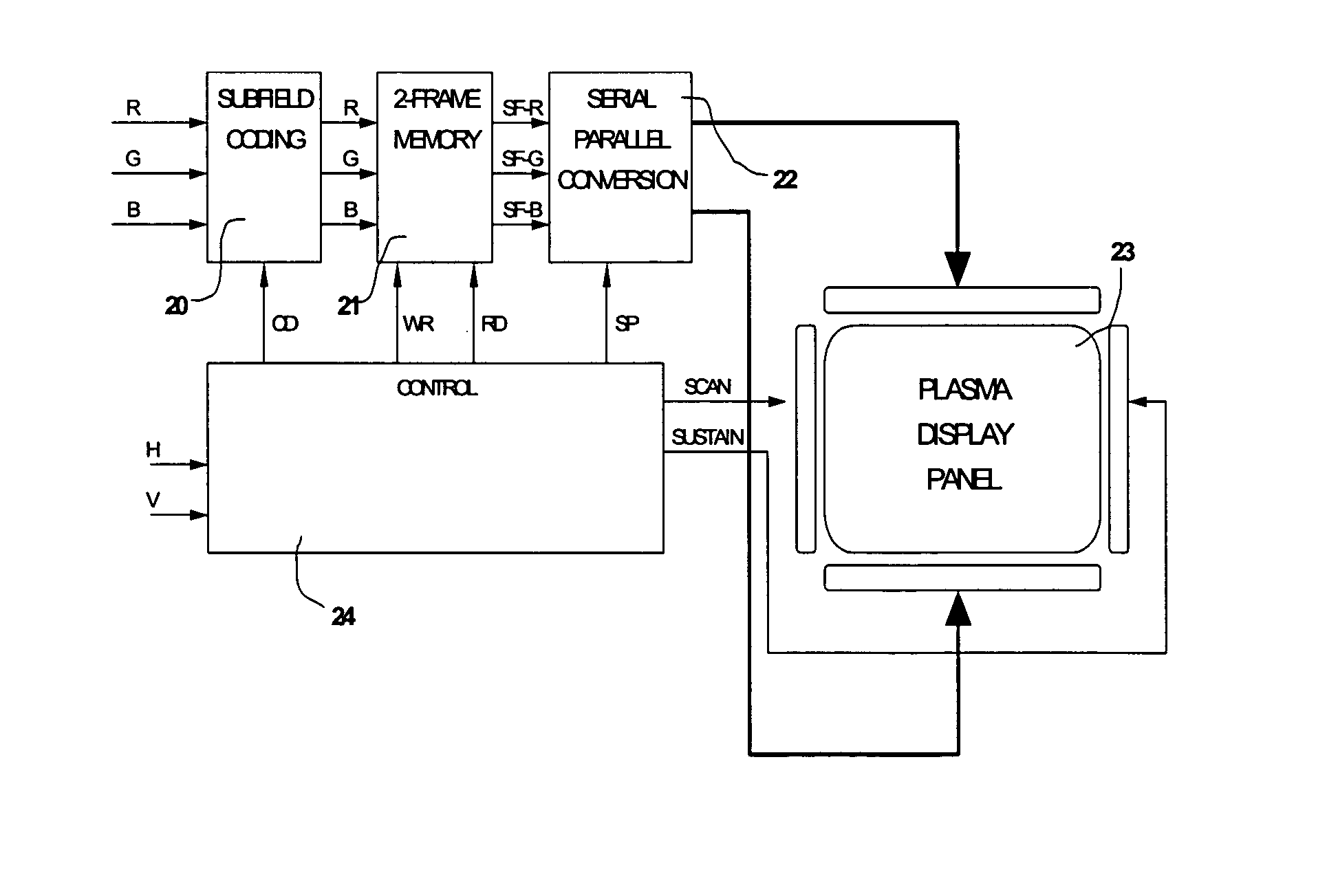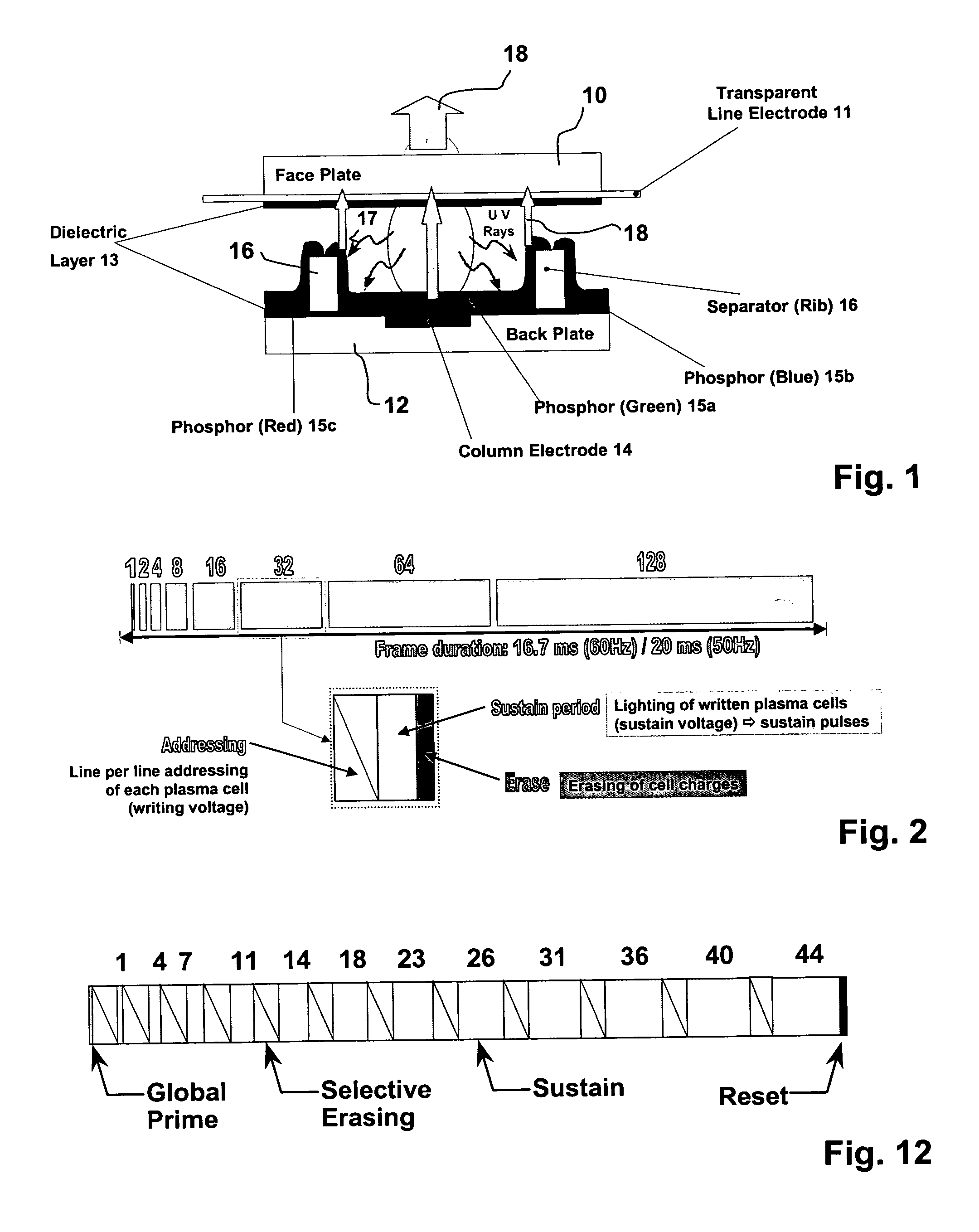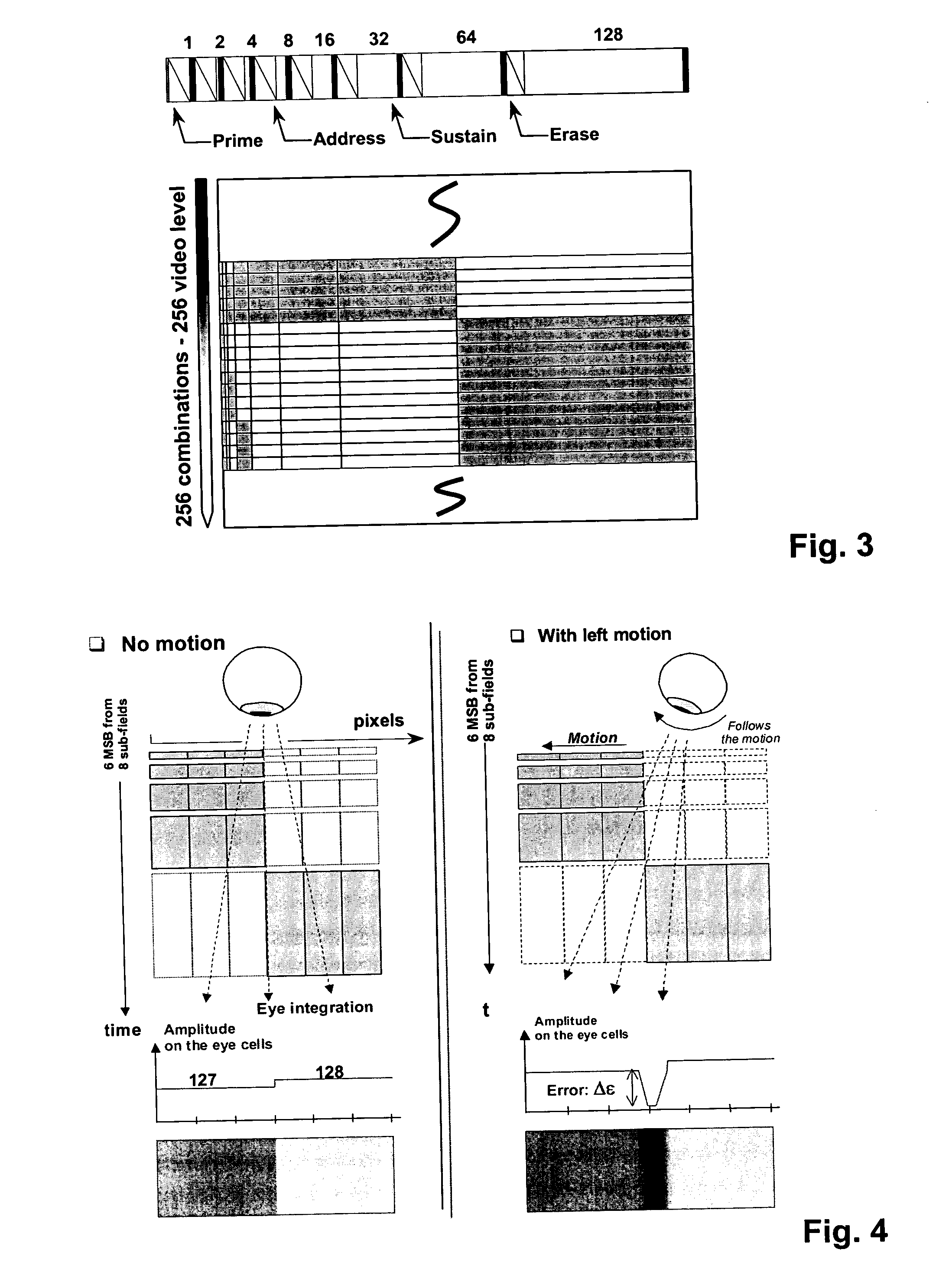Method and apparatus for controlling a display device
a display device and control method technology, applied in the direction of television systems, instruments, picture reproducers using solid-state color displays, etc., to achieve the effect of further reducing the flickering level
- Summary
- Abstract
- Description
- Claims
- Application Information
AI Technical Summary
Benefits of technology
Problems solved by technology
Method used
Image
Examples
Embodiment Construction
[0037] The principle structure of a plasma cell in the so-called matrix plasma display technology is shown in FIG. 1. Reference number 10 denotes a face plate made of glass. With reference number 11 a transparent line electrode is denoted. The back plate of the panel is referenced with reference number 12. There are two dielectric layers 13 for isolating face and back plate against each other. In the back plate are integrated color electrodes 14 being perpendicular to the line electrodes 11. The inner part of the cells consists of a luminous substance 15 (phosphorous) and separators 16 for separating the different colored phosphorous substances (green 15A) (blue 15B) (red 15C). The UV radiation caused by the discharge is denoted with reference number 17. The light emitted from the green phosphorous 15A is indicated with an arrow having the reference number 18. From this structure of a PDP cell it is clear, that there are three plasma cells necessary, corresponding to the three color...
PUM
 Login to View More
Login to View More Abstract
Description
Claims
Application Information
 Login to View More
Login to View More - R&D
- Intellectual Property
- Life Sciences
- Materials
- Tech Scout
- Unparalleled Data Quality
- Higher Quality Content
- 60% Fewer Hallucinations
Browse by: Latest US Patents, China's latest patents, Technical Efficacy Thesaurus, Application Domain, Technology Topic, Popular Technical Reports.
© 2025 PatSnap. All rights reserved.Legal|Privacy policy|Modern Slavery Act Transparency Statement|Sitemap|About US| Contact US: help@patsnap.com



